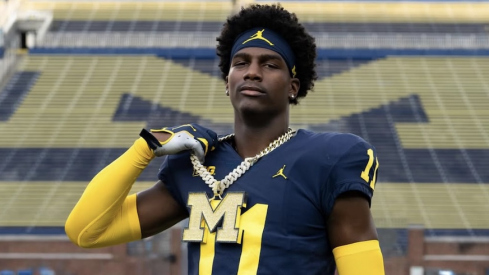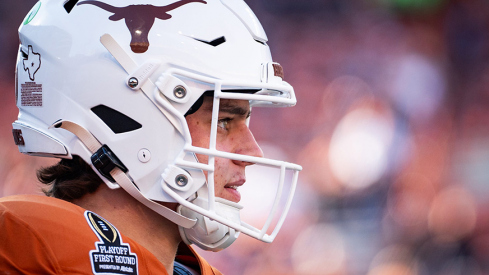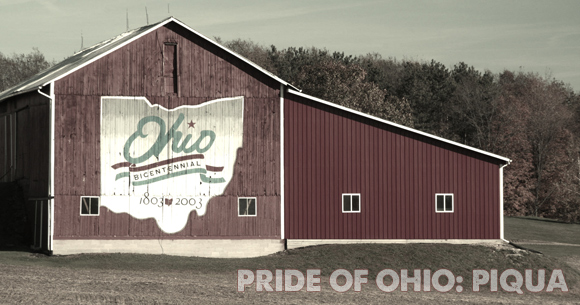
The changing colors of leaves is how most in the Midwest judge the evolution from summer to fall. Red hues turn to orange and the air becomes more crisp. But in Piqua all one needs to do is look at a resident’s driveway. If there’s an Indian head painted on, it’s football season.
That doesn’t mean locals aren’t pondering the glory of football the other eight months of the year. The town of roughly 21,000, located some 30 miles north of Dayton, is distinctly Ohio. There are fields where farmers put in a hard day’s work, downtown businesses, working class neighborhoods and football.
“When you talk about Piqua football, it’s definitely a year-round situation,” said head coach Bill Nees. “You can pick up the newspaper in January or February and find articles. It’s almost like a year-round process, even with the media giving everyone updates with what’s going on.”
They’ve been playing high school football in Piqua for more than a century. Five times the Indians have finished undefeated. The lone state championship came following the 2006 season, when Piqua, led by Brandon Saine, capped a 13-2 year with a victory over Pickerington Central.
“It is one of those places where everyone knows everyone,” said Piqua native and former Ohio State defensive end Matt Finkes. “When you’re in high school and you play football everyone knows who you are. Football is a big part of the culture. It’s a great atmosphere.”
No one person is bigger than the program, but if one person defines what Piqua football is today it is Nees, who enters his 22nd year at the helm of the Indians this fall. He’s on the cusp of becoming the winningest head coach in school history and has regularly turned out Division I recruits since he took over in 1992.
Nees has grown Piqua into one of the Miami Valley’s leading football destinations, and the fans have proven that. Finding an open seat on the home side in Alexander Stadium, which holds 8,200, is no easy task. Twenty-two years after being elevated to head coach, Nees notices an even more fervent fan base.
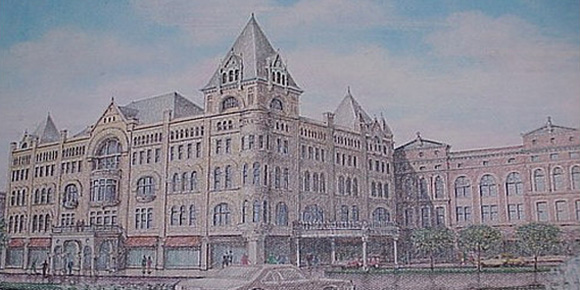
Piqua had success before he arrived, but the Division I recruits and consistent level of winning was something the Indians hadn’t seen for decades. The winning culture brought along expectations. The program took off in the 1990s and has only slowed down for brief stops ever since.
“When you have the success that we’ve had with guys moving on to Ohio State, Notre Dame, Miami (Ohio), Ball State or Michigan State, we’ve had a lot of guys move on to play Division I football,” Finkes said. “It’s always great for those kids to see that and see that when you work hard this is what can happen.
“Those young kids look up to the high school football team. That’s where they want to be someday, as it is in a lot of communities around Ohio. Bill Nees does a fantastic job there, making sure the players and the community really stays in touch. There is that closeness of little kids looking up to older guys.”
Piqua, Ohio
- Population: 20,592
- Where: 40.148, -84.248
- County: Miami
- Zip Code: 45356
- Area Code: 937
- Fun Fact: Home to the first municipally-operated nuclear power plant.
The Indian program counts Finkes, Saine and Quinn Pitcock among their alumni, all three having furthered their playing days at Ohio State. The trio, along with several others who continued on to the world of college football and beyond, holds a special place in their heart for Piqua.
Small town communities embrace football and keep the sport and life fun. Fridays are events for friends and families of the participants.
“Throughout my college career and even into my professional career and still today, you get great support,” Finkes said. “I still get notes from people. It’s one of those great communities where the people really rather around each other and stay close knit.
“The people in that town support their athletes that move on and represent the town.”
Said Nees: “I talk to a lot of guys who have played in college and the one thing they talk about is the high school setting they remember most for being more fun. The higher you go up the more it becomes a business, and it becomes a little more sterile.”
There are an untold amount of formulas that coaches use and create to push players past limits they didn’t know could be reached in order to realize their potential and contribute to a winning team. It’s been no different at Piqua. One ingredient has been familiar faces returning to the team.
From the junior high level on up, more than half the coaches have a Piqua background. All eight in junior high are former Indian players, half of the ninth-grade coaches are Piqua alums and three of Nees’ seven assistants for the varsity once wore red, white and blue.
“It’s easy in a way and difficult in a way,” Nees said. “It’s easy because I have a great group of assistant coaches that have been with me for 10 or 15 years. We don’t have a high rate of turnover with our coaches. So when you have those guys constantly coming in and being living proof, that’s the easy part, and then they turn on the TV and see Brandon Saine playing and Matt Finkes commentating.
“The hard part is making sure it doesn’t get stale. You can’t do the same thing and say, this worked last year so it’s going to work this year. Kids change on a year-to-year basis. You have to adapt. The game is modernizing. You can’t just sit back and polish your state championship ring and say it’s worked before, so if it doesn’t work it’s someone else’s fault. It always lands with you.”
The quickest and easiest way to draw the ire of fans in Piqua is to lose to archrival Troy. Located less than 15 miles a part, the two high schools first met in 1899, two years after the first Ohio State-Michigan game. Since 1911, the Indians and Trojans have played every season.
“It’s a football town, and that’s what the community lives for.”
The outcome of the game – for the winner, anyway – is a special point of pride. Both communities take the contest serious and have no desire to be reminded about the previous season’s failure for 365 days. There’s a dose of respect involved, but make no mistake about it, the teams and communities are not friends.
“It is Ohio State-Michigan at a lower level,” said Finkes, who has been a part of both rivalries. “There is dislike between the communities, jokes made about people from Troy and jokes made about people from Piqua. I remember in high school people pulling up to the stadium three hours before the game waiting to get in.
“We played a playoff game at Welcome Stadium and they had to bring in extra stands, and it still wasn’t enough. There were people just standing on the field because it is that big of a rivalry. It’s something that is instilled in kids at a young age. The high school teams go to the seventh and eighth grade Piqua-Troy games because at every level you’re taught to hate Troy and want to win that game. It translates to every single sport. It’s not a joking rivalry, it’s we really don’t like you.”
From a young age, Nees has been involved with football and even he has seen nothing quite like the conflict with Troy. It’s not unusual for Troy to be mentioned on a daily basis, he said. But that level of emphasis is what separates regular games from rivalries.
“It’s really crazy when you are in the midst of it,” Nees said. “You just get caught up in the whole thing. It’s great for our players to be able to play in that type of atmosphere.”
Piqua-Troy games draw as many as 14,000 spectators. Nees likes telling stories about his former players that go off to college and discuss their high school careers with new teammates. Inevitably, a conversation rises about rivalries. But, according to Nees, none is bigger than Piqua-Troy.
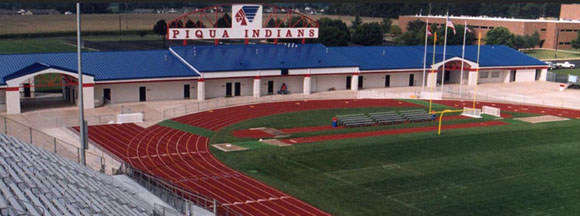
“You can always put the trump card down when you say you played in the Piqua-Troy game,” he said. “For the two communities, there’s nothing bigger.”
Nees quickly discovered the magnitude of the game in his first season as head coach. Troy defeated Piqua handily in the regular season, but there would be a rematch in the state playoffs. The rallying cry for the team became avoiding being the answer to a dubious trivia question: which Piqua team is the only one to lose to Troy twice in the same season?
The answer would have been 1992 had the Indians not defeated the Trojans 20-7.
In three months another group of young men will take to Alexander Stadium, eager to stake their claim as the next great Piqua football team. Beating Troy will be at the forefront of their minds, and some will carry the goal of playing Division I college football.
“Every year there are very high expectations,” Finkes said. “Bill Nees has done a great job of building a program and being successful. There’s a buzz in the air when fall rolls around and camp starts. The local newspaper writes articles from the first day of practice until the season ends. It’s definitely an event.
“It’s a football town, and that’s what the community lives for.”
Pride of Ohio: St. Henry | Martins Ferry | Piqua
